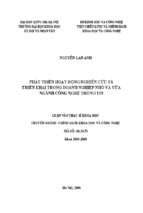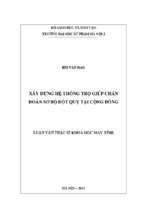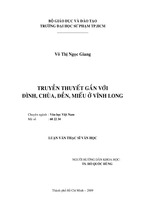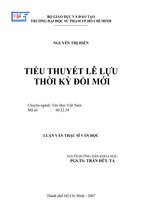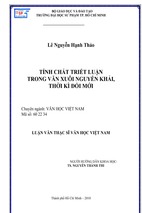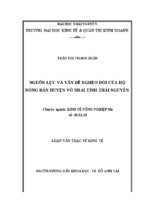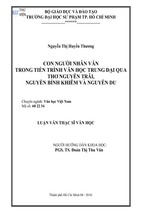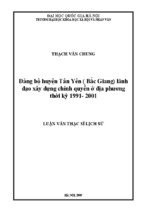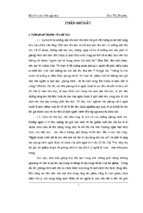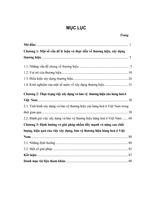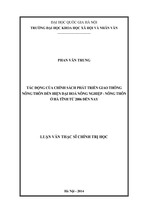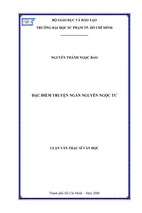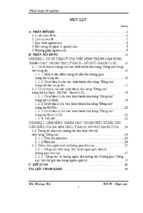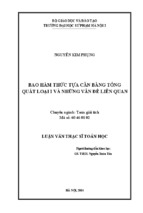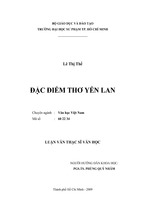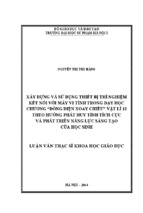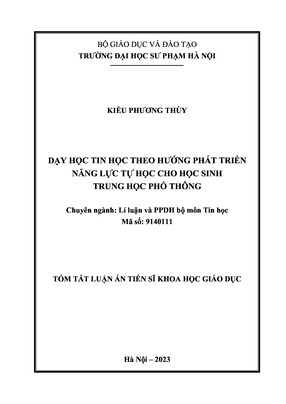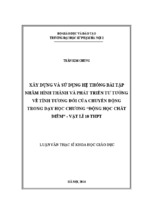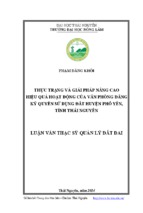Based on the theoretical background of cross-cultural communication, this study aims at investigating the American values reflected in one of the US all-time favorite sitcoms “Friends”, and the differences in the perception of those values between Vietnamese viewers and American viewers. The main instruments of data collection are observation and questionnaire. To succeed in doing this research, the author of the study takes informants’ social parameters such as age, living area, and knowledge of foreign language(s) into consideration. Besides, their surveyed responses are carefully analyzed to build a general set of viewpoints of the audience on “Friends”. It is revealed in the study that “Friends” expresses fully all American values listed in the foundation theory. Furthermore, there are noticeable differences in the perception of those values between Vietnamese viewers and American viewers due to the gap of cultural knowledge.
VIETNAM NATIONAL UNIVERSITY, HANOI
UNIVERSITY OF LANGUAGES AND INTERNATIONAL STUDIES
FACULTY OF ENGLISH LANGUAGE TEACHER EDUCATION
* * *
PHÓ QUỲNH ANH
THE REFLECTION OF AMERICAN VALUES
IN ONE OF THE US ALL-TIME FAVORITE
SITCOMS "FRIENDS”.
SUBMITTED IN PARTIAL FULFILLMENT OF THE REQUIREMENTS FOR THE
DEGREE OF BACHELOR OF ARTS (TEFL)
SUPERVISOR: PHAN THỊ VÂN QUYÊN, M.A.
- Ha Noi, May 2011 -
ACKNOWLEDGEMENTS
First and foremost, I would like to send my deepest gratitude to
my supervisor – Ms. Phan Thi Van Quyen for her careful guidance and
valuable advice. For all her sympathy and patience during the time I
carry out this study, I am truly grateful.
I would also take this opportunity to express my biggest
thankfulness to all my classmates at E1K41, who have always been
there for me, supporting me physically and mentally. I want to say a
special thank to Ms. Pham Thi Thuy Linh who encouraged me to follow
this subject and guided me with my first steps of doing the research; to
Ms. Nguyen Thanh Thuy, Ms. Nguyen Vu Xuan Lan, Ms. Nguyen
Hong Ngoc, Ms. Truong Hai Ha and Ms. Vi Dieu Thuan for their
constant support as well as cooperation in my data collecting procedure.
I would like to thank the informants, both Vietnamese and
American, who were so generous and willing to help me with the
questionnaire. Had it not been for their generosity and concerns for the
subject, the study could not be accomplished.
Above all, I would like to express my greatest love and gratitude
to my parents and my two best friends Ms. Nguyen Hoang Khanh Minh
and Ms. Dang Thi Nhu Y for their unconditional caring and
thoughtfulness. Without them, I would not have the strength and the
will to go to the end of this long challenging road.
ii
ACCEPTANCE
I hereby state that I: Phó Quỳnh Anh from group 071E1- Fast track
program, being a candidate for the degree of Bachelor of Arts (TEFL)
accept the requirements of the College relating to the retention and use
of Bachelor’s Graduation Paper deposited in the library.
In terms of these conditions, I agree that the origin of my paper
deposited in the library should be accessible for the purposes of study
and research, in accordance with the normal conditions established by
the librarian for the care, loan or reproduction of the paper.
Signature
iii
ABSTRACT
Based
on
the
theoretical
background
of
cross-cultural
communication, this study aims at investigating the American values
reflected in one of the US all-time favorite sitcoms ―Friends‖, and the
differences in the perception of those values between Vietnamese
viewers and American viewers.
The main instruments of data collection are observation and
questionnaire. To succeed in doing this research, the author of the study
takes informants‘ social parameters such as age, living area, and
knowledge of foreign language(s) into consideration. Besides, their
surveyed responses are carefully analyzed to build a general set of
viewpoints of the audience on ―Friends‖.
It is revealed in the study that ―Friends‖ expresses fully all
American values listed in the foundation theory. Furthermore, there are
noticeable differences in the perception of those values between
Vietnamese viewers and American viewers due to the gap of cultural
knowledge.
iv
TABLE OF CONTENTS
ACKNOWLEDGEMENTS ...............................................................................ii
ABSTRACT ...................................................................................................... iv
LIST OF FIGURES AND TABLES .............................................................. viii
CHAPTER I – INTRODUCTION.................................................................. 1
I.
Statement of Topic................................................................................. 1
II.
Significance of the Study....................................................................... 3
III. Aims of Study and Research Questions ................................................ 3
IV. Scope of the Study ................................................................................. 4
V.
Overview of the Research Paper ........................................................... 5
CHAPTER 2 – LITERATURE REVIEW ..................................................... 6
I.
II.
Culture and Cultural Values .................................................................. 6
1.
Definition of Culture .......................................................................... 6
2.
Components of Culture ...................................................................... 8
3.
Cultural Value .................................................................................... 9
American Cultural Values ................................................................... 10
III. The sitcom ―Friends‖ ........................................................................... 19
CHAPTER III – METHODOLOGY ........................................................... 22
v
I.
Participants .......................................................................................... 22
II.
Data collection instruments ................................................................. 23
1.
Observation....................................................................................... 23
2.
Questionnaire .................................................................................... 23
III. Data collection procedure .................................................................... 24
IV. Data analysis method ........................................................................... 25
CHAPTER IV – RESULTS & ANALYSIS ................................................. 27
Realization of American values reflected in ―Friends‖....................... 27
I.
1.
Individual Freedom .......................................................................... 27
2.
Self-reliance ...................................................................................... 33
3.
Equality of opportunity .................................................................... 36
4.
Competition ...................................................................................... 40
5.
Hard work ......................................................................................... 46
6.
Material wealth ................................................................................. 49
7.
Directness, Openness and Honesty .................................................. 51
8.
Practicality and Efficiency ............................................................... 54
9.
Change orientation ........................................................................... 57
10.
Informality ..................................................................................... 60
vi
II.
11.
Future orientation .......................................................................... 62
12.
Time and its control....................................................................... 64
Vietnamese and American viewers‘ perception of the American values
reflected in ―Friends‖. .................................................................................. 65
Question 1: Do you find ―Friends‖: Extremely funny/Funny/Not funny?
.................................................................................................................. 66
Question 2: Do you have any difficulties while watching ―Friends‖?
Language/Background knowledge/None? ............................................... 67
Question 3: Among these listed American values, which one is reflected
in ―Friends‖ according to your observation? ........................................... 70
Question 4: Among the values you recognize, which one is the most
obviously seen? Which one is the least obviously seen? ......................... 77
CHAPTER V – CONCLUSION ................................................................... 80
I.
Summary .............................................................................................. 80
II.
Implication ........................................................................................... 81
III. Limitation of the study ........................................................................ 82
IV. Suggestion for further research ........................................................... 83
REFERENCE ................................................................................................. 84
APPENDICES ................................................................................................ 86
vii
LIST OF FIGURES AND TABLES
Figures
Figure 1& 2: The level of hilarity of ―Friends‖ in the view of
Page
73
Vietnamese and American audience
Figure 3: Difficulties of Vietnamese and American viewers while
74
watching ―Friends‖
Figure 4: American values reflected in ―Friends‖ according to
Vietnamese and American viewers
Figure 5: The most obviously seen American value according to
77
84
Vietnamese and American viewers
Figure 6: The least obviously seen American value according to
85
Vietnamese and American viewers
viii
CHAPTER I – INTRODUCTION
I.
Statement of Topic
[The gang is hanging out in the coffee shop]
Phoebe: I'm going to get a coffee. Anybody want anything?
Monica: I'll have a latte.
Ross: I'll have a blueberry muffin, with a decaf.
Chandler: I'll have a bagel with a little... [Interrupted by Phoebe]
Phoebe: You know, I was just being polite.
I am not giving you just a random funny story; it is one of the
daily conversations among friends in the all-time favorite sitcom series
―Friends‖. If you watch the scene, it will be more vivid and hilarious. In
the series, there are tons of situations where you can laugh at, have
some fun and enjoy your time; many people agree with that. But there
are more than jokes and laughter in the series. Viewers can see
friendship being honored; learn lessons about dealing with situations in
life, etc. And in the eyes of a young researcher, there are American
values reflected in the series. As for the example above, we can see not
only politeness (the reason for Phoebe asking if anyone needs
anything), but also directness (Phoebe directly says that she was just
being polite to her friends) and the self-help spirit (Phoebe expects that
her friends should get their own drinks and cake).
Many people I know watch ―Friends‖ and conclude: ―Yes, it‘s
funny. Then what?‖ or ―The series is just about six people in New York,
1
what‘s the big deal?‖ It seems to me that the sitcom has been seriously
misunderstood as some cheap normal sitcom, in which there are some
silly situations and jokes. There must be a reason why ―Friends‖ is a
huge success of American sitcom industry, is warmly welcomed and
eagerly expected for ten years of its broadcast, from 1994-2004, besides
the jokes and funny situations. The Los Angeles Times called it "flat-out
the best comedy series of the new season", even a British website
http://www.televisionheaven.co.uk/friends.htm assured that ―Friends‖ is
―one of the last great television phenomenon‘s of the last century‖ and
―has become the "Must" in "Must-See TV" for the NBC network in the
USA‖. ―Friends‖ is a sitcom series about six friends in their twenties,
with their own troubles, living in New York, where the daily situations
in life bring about the lessons and gradually transform them into grownups. Each character carries in themselves the characters of New Yorkers
and lives up to their principles which are the manifestations of the
American values. In the period of 10 years, the sitcom reflects closely
the New York society and its changes over time: jobs are being more
important, single life is popular, sexuality is openly discussed, etc. To
some extent, ―Friends‖ is one of the valuable sources to study New
Yorkers‘ behavior, hence the values they live by.
Therefore, ―Friends‖ is the target of my research not for its being
funny, but because of its richness in American values that viewers can
find in each conversation or action of every episode.
2
II.
Significance of the Study
Someone may think that the study is not worth doing since it is
about funny stories and practical jokes. I see it differently and take the
sitcom seriously. First and foremost, the research will give readers an
insightful view of the sitcom, which is the hidden value beyond words
and jokes. Readers will know about New Yorkers‘ life, their beliefs and
values reflected in their words and actions, their favorite topics, their
lifestyles, etc. As a result, it would be of great help for American
language and culture teachers and learners. The sitcom will enable
learners to withdraw lessons from a less academic and head-aching
source, yet authentic and useful. The casual and friendly atmosphere of
watching this sitcom will make learners feel relaxed and more willing to
study American culture. Besides, there have been not many researches
on this particular subject; hence mine would be a contribution to the
category, and also a reference for those who want to carry out a research
in the same field, on the same subject.
III.
Aims of Study and Research Questions
This study aims at finding out the values of Americans in general
reflected in the sitcom ―Friends‖, and investigating the perceptions of
Vietnamese viewers of the American values reflected in the sitcom. The
answers to these questions will help the researcher see the cultural gap
between American and Vietnamese. From that, the researcher can
suggest the implications for Vietnamese viewers to watch the sitcom
effectively and meaningfully, as well as for the use of ―Friends‖ in
3
teaching and learning American and Vietnamese Cross-cultural
Communication.
In a nutshell, the research is going to find the answers to these
questions:
What are the American values reflected in the sitcom “Friends”?
What are Vietnamese and American viewers’ perceptions of the
American values reflected in the sitcom “Friends”?
IV.
Scope of the Study
In this study, generally, the researcher aims at the values of the
American even though the setting of the sitcom is in New York and the
main characters are New Yorkers. Therefore, only the American values
mentioned in the literature review are taken into account.
Participants are both American and Vietnamese people who have
watched fully 10 seasons of the sitcom ―Friends‖. Moreover, because
―Friends‖ was broadcast from 1994 to 2004, about the lives of six New
Yorkers from their mid twenties to thirties; therefore, the age of the
audience is also in the same range. Consequently, the questionnaires
would be delivered to those from the age of 20 to 40 in order to match
the age range of the targeted audience of the sitcom.
As for Vietnamese viewers, since the language barrier somehow
limits their understanding of the sitcom as well as the values in it, the
researcher does not have high expectation of them absorbing fully what
is hidden underneath the words. The paper will record Vietnamese
viewers‘ thoughts of American values as far as they are perceived.
4
V.
Overview of the Research Paper
The Research Paper consists of chapters:
Chapter I: Introduction – an overview of the research paper
which contains the research‘s rationale, the aim, the significance and the
scope of the study.
Chapter II: Literature review – the theoretical foundation for the
research.
Chapter III: Methodology – detailed methods that have been used
and the procedures that have been followed by the researcher.
Chapter IV: Findings – the answers to the research questions.
Chapter V: Summary – the conclusion for the research and
suggestions for the use of ―Friends‖ in studying American studies and
Cross-cultural communication.
5
CHAPTER 2 – LITERATURE REVIEW
I.
Culture and Cultural Values
1. Definition of Culture
Many definitions of the term ―culture‖ have been proposed since
people started to realize the existence of culture in daily life. In their
book Culture: A Critical Review of Concepts and Definitions, Alfred
Kroeber and Clyde Kluckhohn compiled a list of 164 definitions of the
word ―culture‖, and grouped them into three basic senses:
Excellence of taste in the fine art and humanities, also known
as ―high culture‖.
An integrated pattern of human knowledge, belief, and
behavior that depends upon the capacity for symbolic thought
and social learning.
The set of shared attitudes, values, goals, and practices that
characterizes an institution, organization or group.
In this research, we do not mention ―culture‖ as ―high culture‖,
but in the other two senses of meaning. In these senses, there have been
many ways of understanding the term ―culture‖ also.
Ronald Wardhaugh (1993) shortly and simply defines culture in
his book as ―the ‗know-how‘ that a person must possess to get through
the task of daily living.‖ This definition is simple but hasn‘t shown the
6
source of culture; it is just the function or the role of culture in a
person‘s life.
Meanwhile, Kluckhohn (1951) thinks that:
Culture is the patterned ways of thinking, feeling and reacting,
required and transmitted mainly by symbols, constituting the
distinctive achievements of human groups, including their
embodiments of artifacts, the essential core of culture consists
of traditional (i.e. historically derived and selected) ideas and
especially their attached values.
He adds the mutual influence between culture and the people. It
is true that culture is formed by the people, but it also constitutes the
achievements of human groups, decides their actions, thoughts and
feelings.
Hofstede (1991) extends Kluckhohn‘s definition by purporting
that culture is learned from one's social environment and is not genetic.
Therefore, Nguyen Quang (1998) introduces that culture is non-natural.
It has been created through ―the history of human development‖; hence
it ―is not static and is always changing‖. The beliefs and values people
have and practice right now is different from the one our ancestors had
and did.
Overall, the researcher finds the definition by Levin and Adelman
(1993) the most informative and precise about the subject: ―Culture is a
shared background (for example, national, ethnic, religious) resulting
7
from a common language and communication style, customs, beliefs,
attitudes and values.‖
From this definition, we can conclude that different nations or
religions in the world have different cultures; and the people‘s
behaviors, attitudes and feelings are decided by the culture they are
living in.
2. Components of Culture
Stephen Moore (1985) claims the components of culture as the
followings:
Beliefs: these are general and vague opinions about the world
and about the nature of society. For example Christians
believe in God and heaven without the need to find evidence
of their existence.
Values: these are vague beliefs about what is right and correct
in the world, meaning there are certain appropriate forms of
action which ought to be taken. For example killing is wrong
since every life is precious.
Norms: these are socially expected patterns of behavior. For
example when a Japanese bows as a gesture of greeting, the
opposite person is supposed to bow back; or an American
gestures a handshake, the opposite person is expected to gives
out his/her hand to make a handshake too.
Roles: social roles are patterns of behavior expected of a
certain person according to his/her occupation or position
8
he/she holds in the society. For instance the role of a chef is to
cook well, to know food, to be creative and sensitive with
food; therefore, if a chef does not cook well or not have
sensitivity with food, other people would be surprised and do
not regard him a chef.
Role conflict: A person living in this world holds many
different roles in a society. Mr. A can be in the role of a father
to his daughter, a managing director in his company, a friend
to his friend, etc. These roles are quite separate and
complementary but sometimes, they may conflict. For
instance a friend of his also works in his department but as a
managing director, Mr. A has to fire the friend for low
performance at work. If Mr. A fires his friend, he violates the
role of a friend which is being supportive and helpful. But if
he does not, he violates the role of a managing director which
is keeping the good performance of the company.
Status: This refers to the position of a person or social role in
the society according to the amount of prestige received from
others. In different societies or cultures, the status varies. In
Vietnam, they used to love girls with black teeth and honored
them more than those with white teeth. In Japan, Samurai
warriors received the greatest prestige, only after the Emperor.
3. Cultural Value
As stated above, value is one of the components of culture. Here,
the word ―value‖ is not understood as the price, money or worth of
something, but as in the word ―cultural value‖.
9
In Cambridge Advanced Leaner‘s Dictionary, value is defined as
―the beliefs people have about what is right and wrong and what is most
important in life, which control their behavior.‖ As Wikipedia puts it,
simply values ―identify those objects, conditions or characteristics that
members of the society consider important; that is, valuable.‖ This
definition is quite easy to understand, especially when they use the
adjective ―valuable‖ to define ―value‖. But I am not quite contented
with this circle-definition. Milton Rokeach and socialist Robin William,
on the other hand, agree on a more complicated way of understanding
the term. To them, ―values are core conceptions of the desirable within
every individual and society.‖ They are the ―standards or criteria‖ that
orient and determine human‘s behavior such as action, judgment,
choice, attitude, and rationalization. The cultural values are something
like ―pre-codings‖ which control the individual‘s behaviors in that
society. The researcher finds herself in agreement with these authors.
Values are shared beliefs among people in one society of the world
outside, what is right and wrong. They form the straits of people and
guide them to react to each situation in life.
II.
American Cultural Values
Now we know what values are, we would come to the question:
What are the American values? This simple-five-word-question is never
easy to answer for the fact that American itself is a ―nation of nations‖.
From birth, American was known as a multi-cultural country, with a
little bit of this and that all over the world. Immigrants came there
because of the belief called ―American Dream‖. It was the hope to rise
from poverty or modest wealth to great wealth, to live in freedom and
10
democracy, to enjoy the liberty and pursuit of happiness. There were
four major waves of immigration to the United States.
The first immigration took place between the 1550s and
1770s, and the first settlers came from England, Spanish and
France. Between 1619 and 1808, about 500,000 Africans were
brought to the new land for slavery.
The second immigration was between 1820 and 1860.
Peasants displaced from agriculture in Europe and artisans
made redundant by the industrial revolution were eager to
move to the new land.
The third wave began in 1880 and ended in 1914. People
moved to the States to find opportunity and stay away from
World War I. Several hundred thousand Chinese, Japanese
and other Asian also came here to settle down.
The fourth wave arrived in the United State after 1965. A
change in the preference system encourages people originated
from Latin, Asia come to America.
Each race of immigrants coming to the land of liberty brought
along its own values. As they lived together, tried to blend in in the new
land, their values partly dissolved and formed the so-called common
values in the society they were living in and created a ―melting pot‖
America. ―America is God‘s crucible, the great melting-pot where all
races of Europe are melting and reforming!... Germans and French,
Irishmen and Englishmen, Jew and Russian - into Crucible with you all!
God is making the America”( Gerstle. G, 2001) On the other hand,
America is also considered a ―salad bowl‖ in which all the ingredients
11
still keep their own tastes and values but together, they make a whole
united dish. Therefore, there are no clear-cut American values in the
States. Each region will give you a different answer on this topic. And
L. Robert Kohls (1984) has a very humorous yet logical way of
explaining this ―lukewarm‖ situation is that ―The reason for this
decision is itself one very American value—their belief that every
individual is so unique that the same list of values could never be
applied to all, or even most, of their fellow citizens.‖
Should I have to give a general portrait of a typical American, the
six traditional core values would be appropriate to draw that picture.
They are:
1. Individual Freedom
It originated from the foundation of the country. The earliest
settlers came to the North American continent in 1607 to establish
colonies that were free from the controls that existed in European
societies. By the 1770s, the first 13 colonies were established and they
developed their own political and legal systems. A war broke out
between the new states and the British government in 1775. With much
effort and sacrifice, the British colonial settlers won and declare their
independence from England in 1776, and established a new nation – the
United States of America. And so, in the Constitution written in 1789,
the founders limited the power of the government, emphasized on the
individual. The United States came to be associated in their minds with
the concept of individual freedom.
Scholars
and
outside
observers
often
call
this
value
individualism, but many Americans use the word freedom instead.
12
- Xem thêm -

